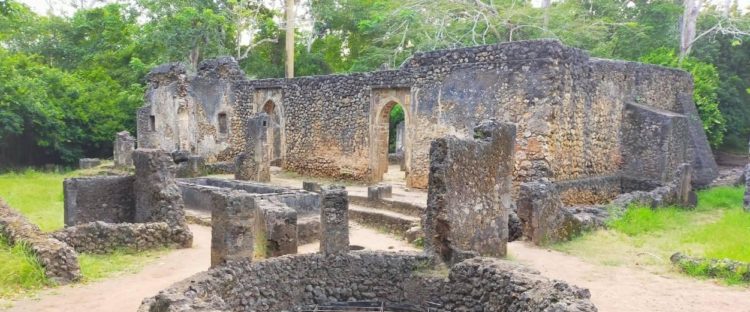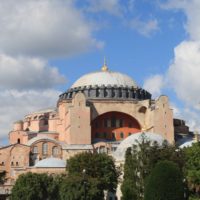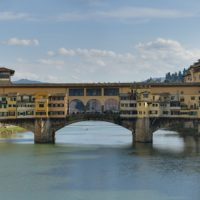When I arrived in Kenya’s coastal town of Malindi, I had one agenda – to explore Kenya’s own Little Italy, a place where ciao, ciao ruled over Jambo, to relax in the laidback town and eat fresh sea food.
Malindi with its 15th century pillar tombs and a thatched 16th century Portuguese chapel was paradise after weeks of rolling about in the African bush.
When cracking a crab shell by the sea one evening, I heard of Gede from the waiter trying to help me with it as Dean Martin’s That’s Amore played in the background.
“These crabs, they are very old. Their shells are like stones,” he said as if revealing a secret. “But you know what is older than crab? Gede.”
I didn’t make the connection till he explained. Watamu, he told me, was a little town merely 25kms away with handsome beaches and water sports and a hidden secret. Gede Ruins.
Two days later, I left for Watamu (in Swahili, Watamu means Sweet People) in search of something older than the crab.
However, it was only on Day 2 of arriving in Watamu that I could visit Gede Ruins located near the junction of Mombasa-Malindi Main Road, having decided first to explore Arabuko Sokoke National Park. This national park is the largest remaining coastal forest in East Africa and home to several endemic species of birds. It wasn’t exactly the Masai Mara, but it had its privileges.
Gede’s charm lies in its mystery
There is never enough time in the world to see all the ruins, but truth is, ruins are a window into the country’s past, I thought as I stepped inside Gede ruins. I genuinely love ruins.
It was empty. It was eerie and somewhat magical. Suddenly I was glad for Mombo, my guide.
There is definitely the presence of someone else here – I felt as though I was being watched. The place is extraordinary. “Even if you are alone, you are not alone,” Mombo said reverently when I mentioned it. “The Old Ones, the spirits of ancient priests of Gede are ever present here.”
“I hope they are harmless?”
“Mostly. You can only come here when you are invited by them,” he continued. “So, it is necessary to show respect, or they can curse you. It has happened.”
The Gede Ruins, a National Museum site is well maintained. The buildings are remarkably well preserved. I felt myself walking back in time as we went through buildings and doorway.
We passed through the remains of the imposing arched entrance that made up the palace complex, believed to be the home of the ruler. It had a number of anterooms and courtyards, the outlines of which were still visible.
We strolled peacefully past the ruins of mosques, a palace and merchants’ homes, for once glad that there were no other visitors. I was the only one that morning.
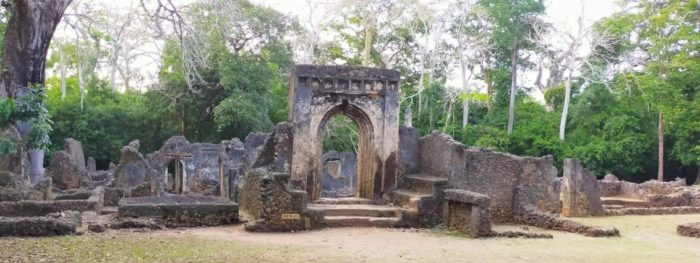
The Palace is fascinating. Inside it you can see the men’s and women’s court rooms, a bath house and a treasure room. Some of the rooms were named after household objects, like the House of Chinese Cash or the House of the Iron Lamp or Venetian Bead.
There were a couple of pillar tombs too, presumably belonging to the rich. Presumably, because much is still unknown about Gede.
As I walked around the ruins listening to Mombo, a picture of a very advanced culture began to emerge. Gede been a thriving community of about 2,500 people. Here, I saw the remains of a flush toilet and bathroom with drains and my guide went over in details over the advanced system of sanitation the people adopted back then. Archaeologists have since discovered goods from as far away as China (Ming vase), Spain (scissors) India (lamps), and Italy (beads) at the site indicating a wealthy settlement. These goods are now displayed in the “museum.”
Gede was inhabited from as early as the 12th century to as late as the 17th century, but it flourished in the 15th century. Traces of an advanced water usage can be seen all over the site – like wells big and small, all over the site. The town architects also collected rainwater and installed lavatories in the stone buildings. My guide explained how one of the merchant’s houses had a bath tub and a swimming pool. The Great Mosque (with three rows of tall pillars) and two other smaller mosques built over different periods of time, indicate that Islam had been ruling religion here.
The town had two walls. Within the inner walls the rich people lived in coral houses, while the outer wall surrounded the town and contained farmland and plantations and houses for the middle or working class. The poor lived beyond the outer walls.
While the site itself feels a little lifeless, in comparison the baobab and May Flowers with their roots growing through the walls and foundations, their branches leaning into the ruins add life to these old ruins. However, let not the vegetation or the warm winds distract you from the carefully laid out mystery town.
In comparison, the present Watamu is young with a history that can be traced to a 1937 shipwreck that washed up an Irish family on the current beach of Turtle Bay.
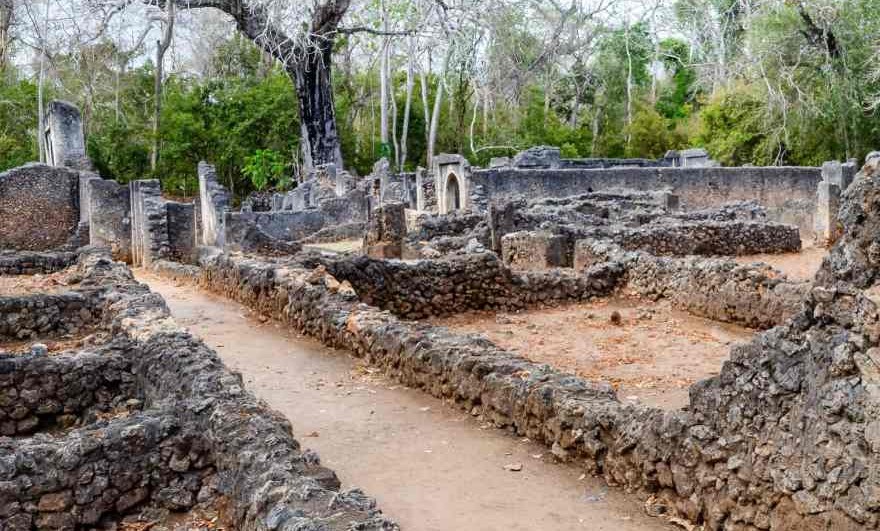
Making sense of the past
In the 20th century, British settlers discovered the ruins of this Swahili settlement. They believed it was inhabited by sailors and settlers from Oman who plied the spice route between the Middle East and Africa.
Gede is over 600 years old and yet there is no written reference of site anywhere. Almost no historical record was ever made, nor was it marked on maps from that period. The reason for the secrecy is unknown, and the cause of its downfall also remains a historical mystery.
The original Swahili name for the town had been Kilimani (meaning a hilly place). Mombo told me when the Oromo people settled in the area, they renamed it Gede, meaning “precious water and green pastures.”
At the edge of the site, partially hidden away is the Swahili Culture Building – built by the government as a place for dinners and meetings, although it has fallen into disrepair. One of the rooms which serves as a museum houses a small collection of coins, pots and lamps and another room exhibits a whale skeleton.
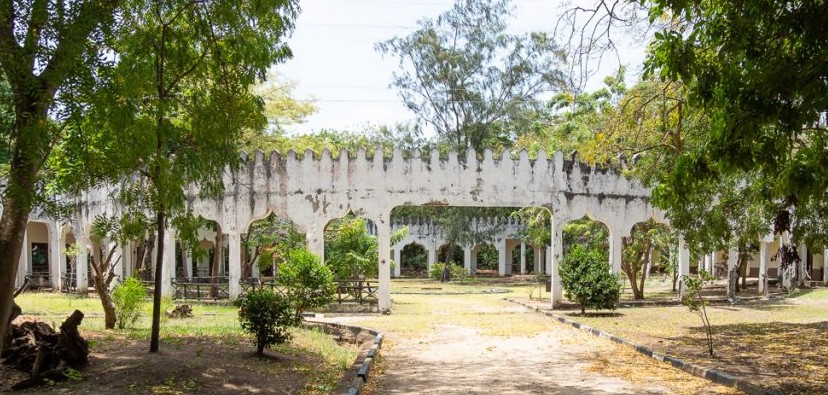
It’s rather eerie – especially when you are left alone to admire the whale.
My guide explained the importance of the enchanting Sacred Forest surrounding the ruins. “These are as important as the ruins itself,” he said and went on explain the traditional rituals and sacrifices for the surrounding villages. “People came to pray for rain, good harvest or good health. Not only that the Sacred Forest is rich in ecological diversity. Look around you,” he points to the giant baobab tree followed by tamarind and fig and a tree with its smooth bark that even monkeys cannot climb. Suddenly I feel very spiritual – as though the Old Ones had accepted my presence and were glad for it.
He puts forward three theories about why the site was abandoned. The first suggests a possible disagreement or war between the sultan of Mombasa who did not favour Portuguese explorers and sultan of Malindi who did – this or an internal war between the Swahili people and Oromo people. His second theory proposes a drop in the water level (evidenced by deepening of the well) which made the residents move away while the third suggests that foreign diseases, like the plague killed the residents.
Whether Gede is cursed, haunted or anonymous, it does not get many tourists – but it holds the key to a very important chapter in Kenya’s history.
As I walked out, something touched me. Was it the wind? A falling leaf? Or the spirits of the Old Ones telling me something?
I heard a whisper.
“Tell the world about us.”
A good reason to make haste to one of Watamu’s well known Italian run café called Non Solo Gelato. The espresso was strong – just what I needed to shake off the spirits.
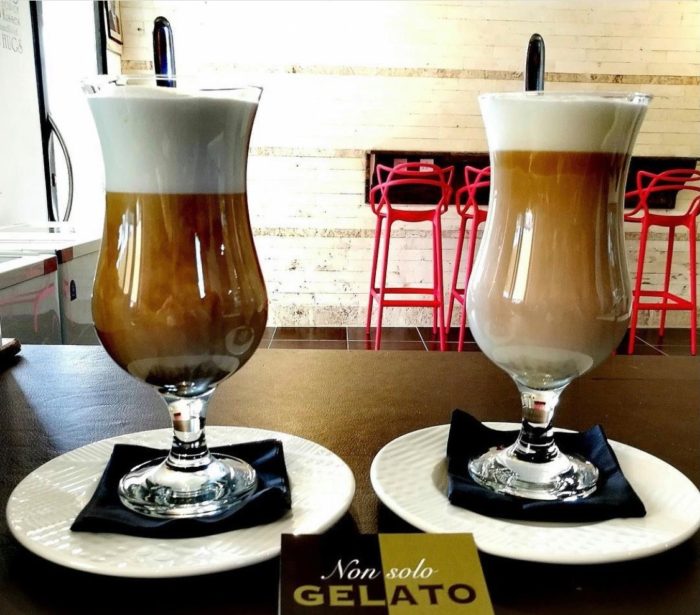
FACT BOX
|
While you are here…
- Visit the Arabuko Sokoke National Park
- Visit the Snake farm
- Swim with the dolphins or go deep see fishing
Useful Info
- Gede entry fee of 1000 KSH.
- Carry plenty of water and snacks.
- Guides are available at the site
Travel
- From Mombasa: 60-75 minutes on Bus or taxi
- From Malindi: 30-45 minutes on bus or taxi
Malindi’s brush with ItalyMalindi is about two hours north of Mombassa and is called ‘Little Italy’ of Africa. Italians arrived here over thirty years ago – and many of them stayed. Here, tourism is Italian-oriented and you won’t find a supermarket or a store signboard that is not Italian. Grocery stores have stock of olive oil, salami, pasta and prosciutto, and pizza joints are everywhere. While this does not make the town entirely “Italian,” there is a visible influence – in the language, food and general behavior. There is an Italian consulate here |

